Famous Contemporary Sculptors – A List of the 15 Best Artists
In the ever-evolving landscape of contemporary art, sculptors have persistently pushed the boundaries of artistic expression, exploring uncharted territories of form, material, and concept. In this article, we list 15 famous contemporary sculptors, all of whom have left a lasting impression on the art world through their inventive methods, diverse materials, and provocative ideas. These artists represent the depth and variety of contemporary sculptural expression, from large-scale public installations to personal works that subvert our perceptions.
Introduction: What Is Contemporary Sculpture?
Within the realm of contemporary art, sculpture has emerged as a prominent and influential medium, standing shoulder to shoulder with other mediums, including painting, installation, photography, performance, and video art. But what precisely constitutes contemporary sculpture, and what sets it apart from its predecessors? Contemporary sculpture encompasses the artistic practice of creating three-dimensional objects from the mid-20th century, around the 1950s and 1960s, up to the present day.

The transition from modern sculpture to contemporary sculpture coincided with the advent of Minimalism and Conceptual art in the 1950s and 1960s, two movements that would leave an indelible mark on the art world. Sculpture, in particular, saw a transformation as new materials, conceptual approaches, and the integration of ready-mades, inspired by the revolutionary work of Marcel Duchamp, became integral to the sculptor’s toolkit.
Most famous contemporary sculpture has several recurring characteristics. These include a foundation that is often rooted in (post-)conceptual ideas, the use of ready-made objects, and the incorporation of diverse materials and techniques. Contemporary sculpture also blurs the boundaries between sculpture and installation art, and has a tendency for artists to outsource aspects of the manufacturing process.
The materials employed in contemporary sculpture have expanded significantly, with traditional elements like wood, marble, clay, and bronze still in use alongside a new arsenal of substances.
Materials such as PVC, stainless steel, concrete, foam, and others have made their way into the sculptor’s repertoire, often harnessed in conjunction with industrial processes, engineering, and cutting-edge technologies. This dynamic shift has unleashed a world of creative possibilities and redefined the very essence of contemporary sculpture.
15 Famous Contemporary Sculptors You Should Know
Now that we have a better understanding of what contemporary sculpture entails, we can have a closer look at famous contemporary sculpture by introducing 15 contemporary sculpture artists who you should know. These artists, through their diverse techniques, creative material choices, and conceptual depth, represent the evolving landscape of contemporary sculpture. Each sculptor’s contributions shed light on the profound impact they have had on the art world and the ongoing transformation of sculptural expression.

Louise Bourgeois (1911 – 2010)
| Nationality | French-American |
| Date of Birth | 25 December 1911 |
| Date of Death | 31 May 2010 |
| Associated Art Movements | Contemporary art, Modern art, Surrealism, and Feminist art |
| Selected Notable Awards | Praemium Imperiale (1999) |
| Most Famous Works |
|
Louise Bourgeois, originally from Paris, France, is an iconic figure in the realm of contemporary sculpture. Her oeuvre features large-scale sculptures and installations characterized by spiders, cages, eyes, and phallic forms. Originally a modern sculptor and developing into contemporary art, Bourgeois masterfully combined traditional sculpture materials with everyday objects, creating thought-provoking pieces that explore a wide range of themes, from jealousy and feminism to anxiety and loneliness.
Her art invites viewers to engage with their own emotions and experiences, transcending mere aesthetics to delve into the human psyche.
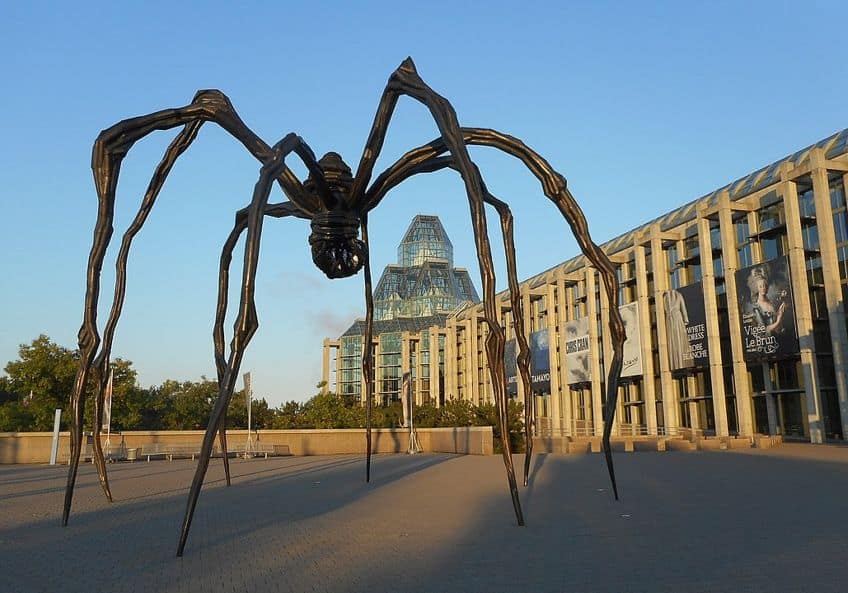
Joseph Beuys (1921 – 1986)
| Nationality | German |
| Date of Birth | 12 May 1921 |
| Date of Death | 23 January 1986 |
| Associated Art Movements | Contemporary art, Modern art, and Conceptual art |
| Selected Notable Awards | Wilhelm Lehmbruck Prize (1986) |
| Most Famous Works |
|
Born in Krefeld, Germany, Joseph Beuys stands as an enigmatic artist and a catalyst for social transformation. He approached art as a vehicle for change, pioneering the concept of “social sculpture” that actively engaged his audience. Beuys’s sculptures and installations challenged conventional art practices, making him a central figure in the development of Fluxus, Performance art, and Installation art.
His thought-provoking and experimental works address complex philosophical and humanist themes, leaving an indelible mark on the world of contemporary sculpture.

Yayoi Kusama (1929 – Present)
| Nationality | Japanese |
| Date of Birth | 22 March 1929 |
| Associated Art Movements | Contemporary art, Pop art, Minimalism, and Feminist art |
| Selected Notable Awards | Praemium Imperiale (2006) |
| Most Famous Work |
|
Born in Matsumoto, Japan, Yayoi Kusama is a remarkable contemporary artist known for her mesmerizing and immersive installations. In the 1960s, she gained fame in New York for her performances, paintings, and sculptures. Her work is characterized by an obsession with polka dots, pumpkins, and mirrors. These elements are not just a visual spectacle but also a reflection of Kusama’s personal struggle with mental illness. Her sculptures, adorned with infinite polka dots or giant, whimsical pumpkins, invite viewers into a world of hallucinatory wonder.
Kusama’s unique visual language is a testament to her ability to channel her inner turmoil into an endless source of creativity, challenging conventional notions of contemporary sculpture.
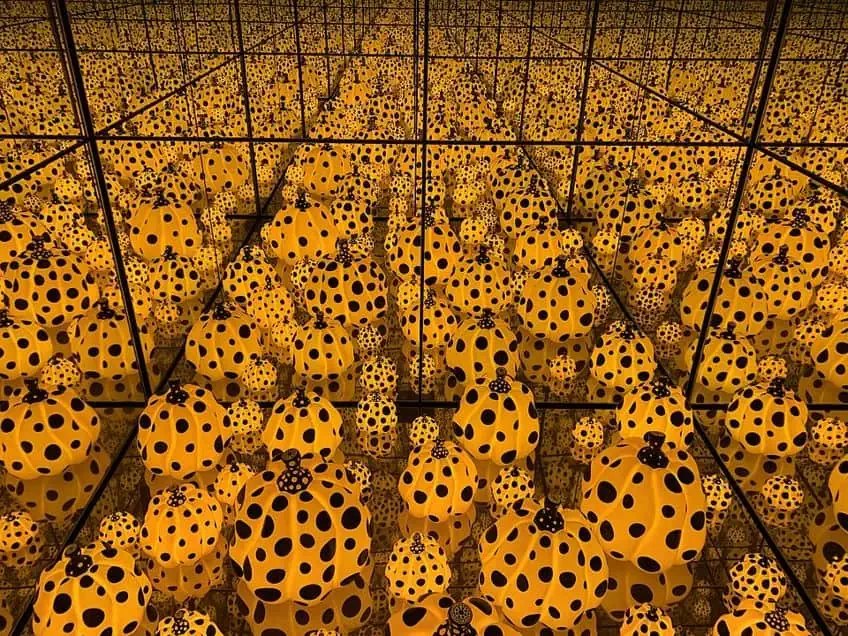
Niki de Saint Phalle (1930 – Present)
| Nationality | French-American |
| Date of Birth | 29 October 1930 |
| Associated Art Movements | Contemporary Art |
| Selected Notable Awards | Praemium Imperiale (2000) |
| Most Famous Works |
|
Niki de Saint-Phalle, who was born in Paris and raised in New York, gained prominence in 1960 by creating artworks where she used a firearm to puncture bags of paint suspended over canvases, causing the paint to splatter and flow down the surface. This unconventional artistic approach aligned with the anti-art sensibilities of the Nouveaux Realistes group, which included artists like Arman, Klein, and her partner, Jean Tinguely. Later in the 1960s, she embarked on the renowned phase of her career, producing large figurative sculptures characterized by a style reminiscent of naive surrealism, partly influenced by the architectural aesthetics of Gaudi. Collaborating with Tinguely, these figurative works interacted with Tinguely’s mechanized creations, resulting in significant public art installations worldwide. Niki’s art challenges traditional boundaries within the art world, blurring distinctions between painting, sculpture, and architecture, as well as between high and low culture, permanence and transience, and conventional norms of propriety.
Instead, her work is characterized by a sense of enjoyment and playfulness.
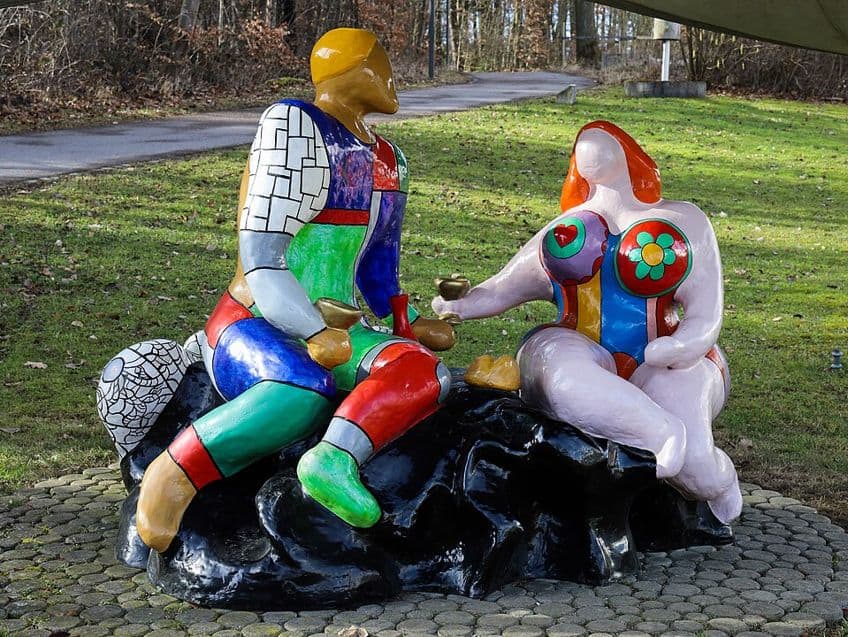
Richard Serra (1938 – Present)
| Nationality | American |
| Date of Birth | 2 November 1938 |
| Associated Art Movements | Contemporary art, Modern art, and Minimalism |
| Selected Notable Awards |
|
| Most Famous Works |
|
Born in San Francisco, USA, Richard Serra has risen to prominence through his monumental steel sculptures that redefine our understanding of space. His work revolves around bending and curving giant steel surfaces, prompting viewers to reconsider form and proportion. The radical simplicity of Serra’s forms and the early use of industrial materials and processes define their minimalist quality.
His towering, recognizable sculptures invite viewers to engage with the space around them, sparking contemplation about the nature of perception and spatial relationships.

Bruce Nauman (1941 – Present)
| Nationality | American |
| Date of Birth | 9 December 1941 |
| Associated Art Movements | Contemporary art and Modern art |
| Selected Notable Awards |
|
| Most Famous Works |
|
Bruce Nauman is a multidisciplinary artist whose work questions the very essence of the human experience. His conceptual work prioritizes meaning over form and frequently addresses themes of alienation through wordplay and irony. In the 1960s, Nauman was extending the boundaries of artistic practice, just like many of his contemporaries, by incorporating performance into his works and eschewing static objects in favor of creating art of experience. He challenges established conventions and employs a wide range of experimental media, including neon and polyurethane foam. Nauman’s sculptures are both abstract and figurative, exploring themes of life versus death, pleasure versus pain, and love versus hate.
His eclectic and thought-provoking art encourages viewers to confront their own existential dilemmas and societal norms.

El Anatsui (1944 – Present)
| Nationality | Ghanaian |
| Date of Birth | 1944 |
| Associated Art Movements | Contemporary art |
| Selected Notable Awards |
|
| Most Famous Works |
|
The intricate work of El Anatsui transcends traditional classification. He is highly renowned for his pliable sculptures made from leftover metal, like liquor bottle tops or cassava graters. By altering these found materials into works of art, Anatsui adds to their significance and gives them a dignity of something highly valued. The artist holds the belief that art is not something created, but rather something that “grows from the environment”. Anatsui was born in Ghana and relocated to Nigeria in 1975, where he currently resides.
Several prestigious international museums have collected his work, including the Smithsonian Institution, the Tate Modern, the Metropolitan Museum of Art, and the Centre Pompidou.
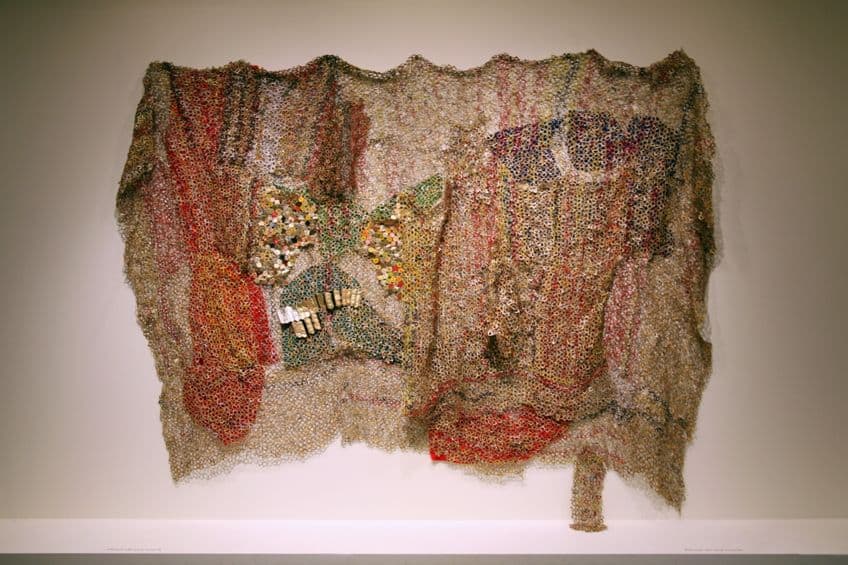
Richard Long (1945 – Present)
| Nationality | British |
| Date of Birth | 2 June 1945 |
| Associated Art Movements | Contemporary art and Land art |
| Selected Notable Awards |
|
| Most Famous Works |
|
Born in Bristol, England, Richard Long is a trailblazer in the realm of Conceptual Art in the United Kingdom. His artistic practice often commences with the simple act of walking, during which he gathers materials from nature that he later incorporates into his unique sculptures. With his focus on unusual materialities and timely processes, Long redefined what sculpture can be in the latter half of the 20th century.
His innovative approach blurs the boundaries between art and the environment, offering viewers a profound connection with nature.

Anthony Gormley (1950 – Present)
| Nationality | British |
| Date of Birth | 30 August 1950 |
| Associated Art Movements | Contemporary art |
| Selected Notable Awards | Praemium Imperiale (2013) |
| Most Famous Works |
|
The human body and how it interacts with space and time are subjects of great fascination for British artist Antony Gormley. Creating anthropomorphic figures with body language that narrates stories and evokes emotions is central to his art. Gormley pushes viewers to reevaluate their relationship to the environment and their own physical presence. Gormley bridges the gap between the human experience and the mysteries of the universe through his deeply introspective journey.
He is exploring the fundamental questions of where humans stand in relation to nature and the cosmos.

Anish Kapoor (1954 – Present)
| Nationality | British-Indian |
| Date of Birth | 12 March 1954 |
| Associated Art Movements | Contemporary art |
| Selected Notable Awards | Praemium Imperiale (2011) |
| Most Famous Works |
|
Anish Kapoor, originally from Mumbai, India, is a contemporary artist residing and working in London, United Kingdom. Kapoor is renowned for his neo-conceptual sculptures and interventions, which challenge the conventions of modern engineering and sculpture. His use of materials such as polished steel, mirrors, and immense PVC skins that can be stretched or deflated creates a deep-felt metaphysical duality of presence versus absence. His work often engulfs the surroundings, the sky, or even the viewer, challenging our perceptions of space and dimension.
Kapoor’s art invites contemplation about the mysterious relationship between the artwork and its environment.
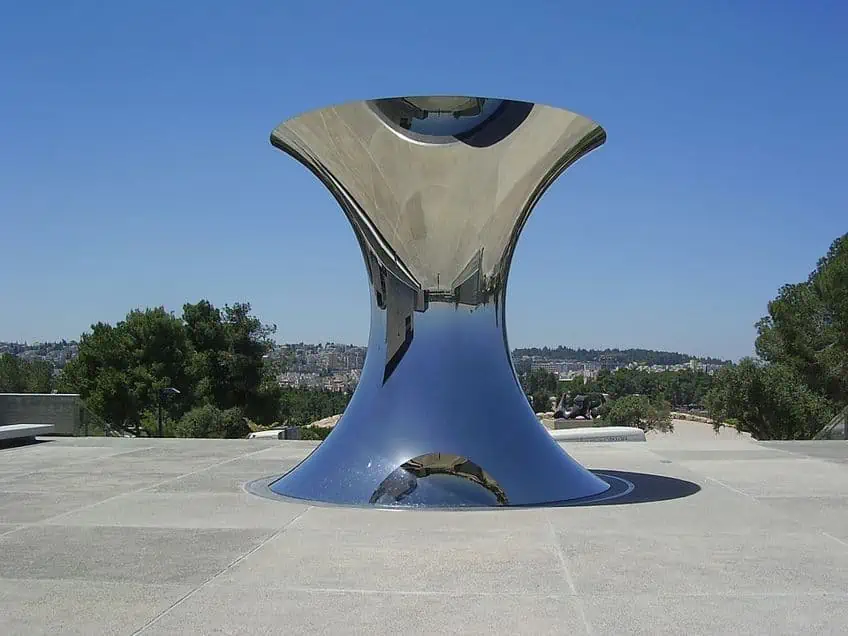
Kiki Smith (1954 – Present)
| Nationality | German-American |
| Date of Birth | 18 January 1954 |
| Associated Art Movements | Contemporary Art |
| Selected Notable Awards |
|
| Most Famous Works |
|
Kiki Smith expansive interdisciplinary practice investigates elemental forces, such as sex, death, regeneration, and the natural world. She uses a variety of media in her work, such as stained glass, sculpture, printmaking, photography, and drawing. Smith has incorporated animals, female figures, and celestial bodies into her motifs over the years, each of which symbolizes a different aspect of human existence. Smith’s artistic journey began when she briefly studied at the Hartford Art School before moving to New York and joining the downtown artist collective Colab. This DIY approach to artmaking and the creative community significantly influenced her trajectory.
Today, Smith’s work is featured in exhibitions across the globe and is part of prestigious collections in major art institutions.
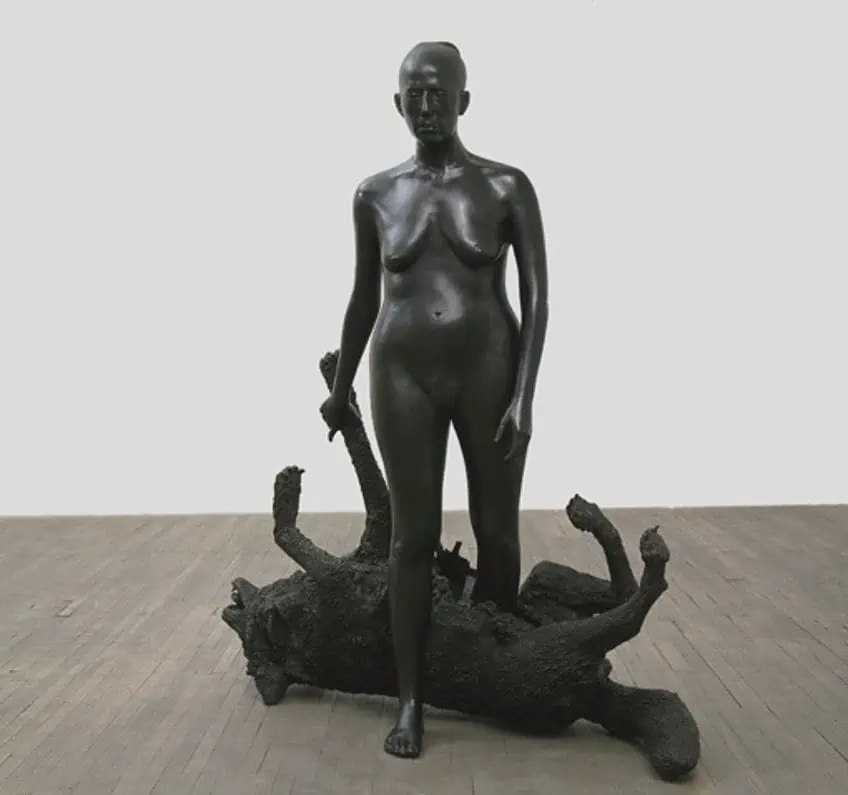
Andy Goldsworthy (1956 – Present)
| Nationality | British |
| Date of Birth | 26 July 1956 |
| Associated Art Movements | Conceptual art, and Environmental art |
| Selected Notable Awards |
|
| Most Famous Works |
|
Andy Goldsworthy, a well-known early environmental artist, is renowned for his site-specific sculptures and land art pieces. Goldsworthy, who was born in England, began working on a farm at the age of 13 and was inspired by the repetitive nature of farm work. The rhythms and routines in such humble work came to play a significant role in his sculpture process. In his artwork, Goldsworthy employs natural materials such as wood, clay, stone, and flower petals. He claims that his main goal is to connect his audience to the natural world. Goldsworthy considers nature to be a collaborator in his work, interacting with the natural cycles of creation and decay.
He frequently highlights the wonders of the natural world and honors its organic patterns in his artwork.
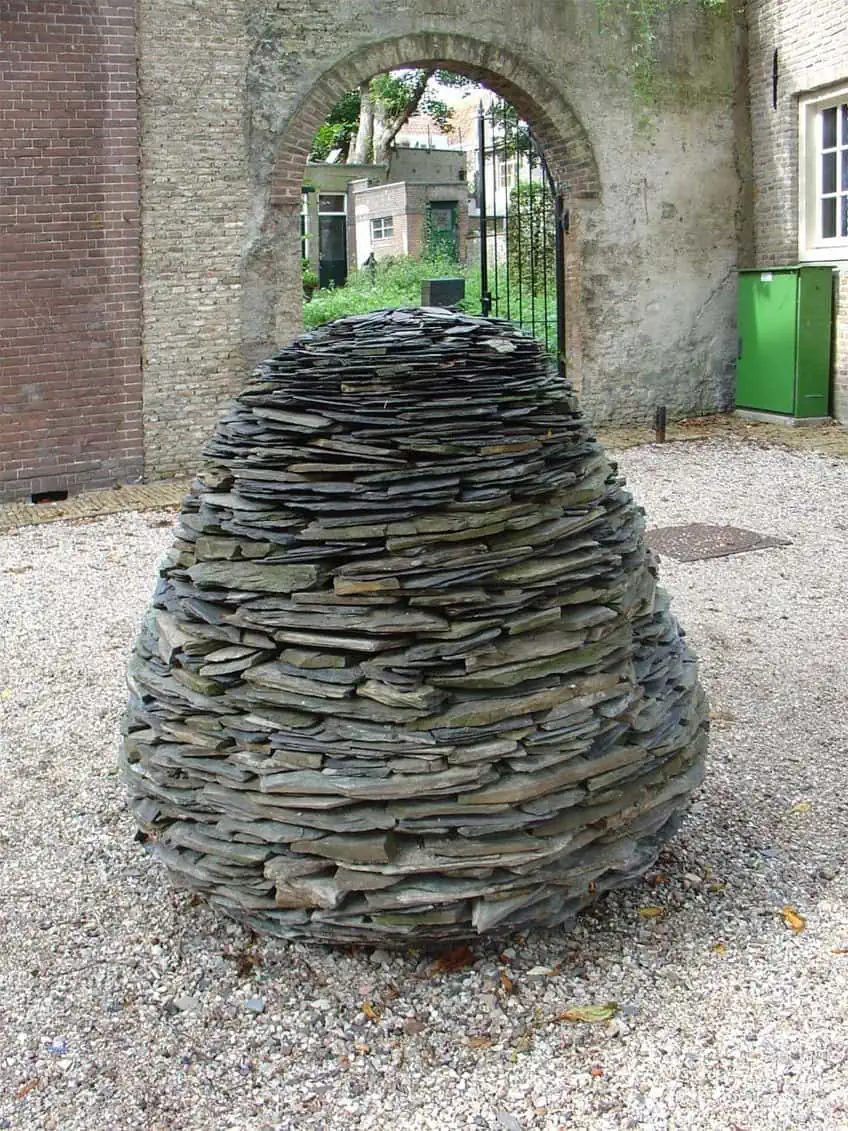
Simone Leigh (1967 – Present)
| Nationality | American |
| Date of Birth | 1967 |
| Associated Art Movements | Contemporary art |
| Selected Notable Awards |
|
| Most Famous Works |
|
Simone Leigh is a versatile contemporary artist whose work spans sculpture, video, and installation. She frequently employs materials and forms traditionally associated with African art, drawing inspiration from a variety of cultures, time periods, and locations worldwide. Her ability to seamlessly integrate diverse influences into her art creates a rich tapestry of meaning and aesthetics.
Leigh’s work is a testament to the power of cross-cultural dialogue and the potential for sculpture to transcend geographical and temporal boundaries, uniting people from different corners of the world through art.
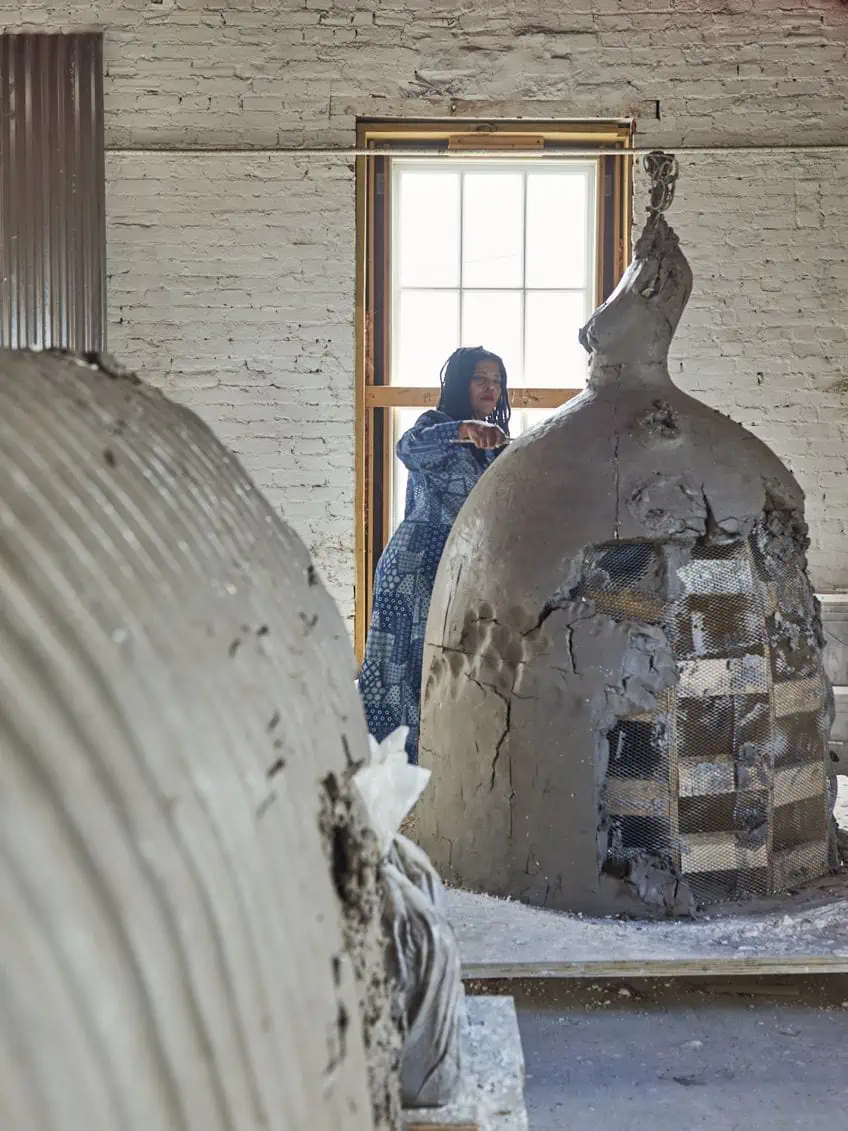
Tara Donovan (1969 – Present)
| Nationality | American |
| Date of Birth | 1969 |
| Associated Art Movements | Contemporary art |
| Selected Notable Awards | MacArthur Fellowship (2008) |
| Most Famous Works |
|
Tara Donovan is a sculptor known for her transformative use of everyday, mass-produced materials, including pins, buttons, paper plates, and plastic cups. Exploring the inherent properties of her chosen materials, Donovan transforms them into large, immersive, and ethereal installations, pushing the conceptual boundaries of the material. Her works evoke geological and biological forms, suggesting cave formations, clouds, and molecular structures. Her methodical and rule-based style aligns her work with the legacy of Minimalist artists such as Sol LeWitt and Eva Hesse.
Tara Donovan’s work challenges preconceived notions about the potential of everyday objects, turning the mundane into the extraordinary.
Nnenna Okore (1975 – Present)
| Nationality | Australian, Nigerian, and American |
| Date of Birth | 1975 |
| Associated Art Movements | Contemporary art |
| Selected Notable Awards |
|
| Most Famous Works |
|
Nnenna Okore, whose roots trace back to Nigeria, has a profound affinity for three-dimensional art, seeing it as a medium that allows her to immerse herself “in the well of sensory experiences.” Her creative process involves weaving, dyeing, winding, and manipulating materials like burlap, wire, and paper, often sourced from West Africa. Okore’s sculptural installations mirror the undulating fabric forms of her mentor, El Anatsui.
Her sculptures are inspired by the wildlife and craft culture she observed in Nigeria during her upbringing.

Reading Recommendations
Contemporary sculpture is an ever-evolving field where artistic expression takes on a wide range of inventive forms and themes. Below, we recommend three books on contemporary sculpture that will provide readers with insightful information about this dynamic art field, its development, and its cultural significance.
These books offer a deeper understanding of the creations of significant contemporary sculpture artists, as well as the creative forces shaping the field of sculpture today.
A Sculpture Reader: Contemporary Sculpture Since 1980 (Perspectives in Contemporary Sculpture) (2006) edited by Glenn Harper and Twylene Moyer
A Sculpture Reader, a special compilation of articles on modern sculptors from Sculpture magazine’s 25-year history, provides an insightful history of sculpture since 1980. The 42 essays in the publication capture the diverse possibilities that define contemporary sculpture by concentrating on specific artists rather than themes or movements.

- An insightful history of contemporary sculpture since 1980
- A collection of 42 essays from Sculpture Magazine
- Explore the diverse possibilities of contemporary sculpture
Sculpture Today (2014) by Judith Collins
This exquisitely illustrated book, which follows the popular, highly illustrated format of Phaidon’s best-selling volumes “Art Today” and “Architecture Today”, provides a thorough overview of developments in the field of sculpture over the past fifty years. The authoritative yet approachable book by Judith Collins examines the different themes, mediums, and techniques that sculptors employ.
It also provides an enlightening look into this diverse and expansive art form.
- A beautifully illustrated book exploring the last 50 years
- An approachable but educational approach
- Explore themes, mediums, and techniques of modern sculpture
Conversations about Sculpture (2018) by Richard Serra and Hal Foster
This volume provides insights into the ideas that have shaped renowned artist Richard Serra’s working practice over the course of his prolific six-decade career. It is derived from conversations between Serra and esteemed art historian Hal Foster that took place over a 15-year period. Conversations about Sculpture offers a thought-provoking analysis of the evolution of sculpture from antiquity to the present, as well as an intimate look at Serra’s life and work, complete with candid reflections on his own moments of discovery. Serra and Foster delve into topics like the artist’s early employment in steel mills, the influence of dance, music, and architecture on his work, the significance of materiality and site-specificity in his aesthetic, the conflicts and controversies his work has encountered, and his conviction that sculpture is an experience. Through the eyes of one of the most accomplished sculptors of all time, they present a history of sculpture across time and culture.
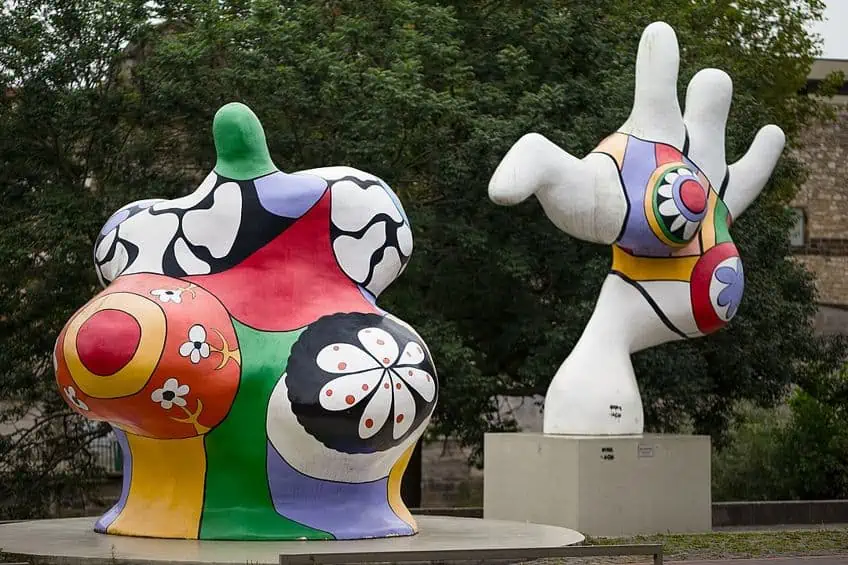 Nanas (2014) by Nike de Saint Phalle; ChristianSchd, CC BY-SA 4.0, via Wikimedia Commons
Nanas (2014) by Nike de Saint Phalle; ChristianSchd, CC BY-SA 4.0, via Wikimedia Commons
- Take a closer look at the work of Richard Serra
- Derived from a series of conversations over 15 years
- Explore the path that took Serra to the heights of sculpture
In the realm of art, contemporary sculpture is essential because it pushes the limits of artistic expression and challenges established norms. It provides a medium that allows artists to go beyond the confines of conventional artistic forms and to explore and convey difficult ideas, feelings, and concepts. The artists profiled in this article are at the forefront of contemporary sculpture. They enhance our cultural landscape, use art as a vehicle for social commentary, and add to the ongoing conversation about the role of art in our ever-changing world.
Frequently Asked Questions
When Did Contemporary Sculpture Begin?
Contemporary sculpture, characterized by its diverse styles, materials, and concepts, began to emerge as a significant art form in the mid-20th century. It drew inspiration from movements like Abstract Expressionism, Minimalism, and Pop art, which challenged traditional sculptural conventions. Over time, it has evolved and expanded with artists exploring abstract forms, unconventional materials, and conceptual ideas, making it an ever-evolving and dynamic field that continues to redefine the boundaries of sculpture.
What Are Contemporary Art Forms of Sculpture?
Contemporary sculpture encompasses a diverse range of forms, including abstract, installation, conceptual, kinetic, environmental, figurative, mixed media, site-specific, digital, and social practice sculpture. Artists in this field push the boundaries of traditional sculptural materials and techniques, often combining multiple forms and materials to create innovative and engaging works. This dynamic and ever-evolving art form reflects the diversity of artistic expression in the modern era.
Jordan Anthony is a Cape Town-based film photographer, curator, and arts writer. She holds a Bachelor of Art in Fine Arts from the University of the Witwatersrand, Johannesburg, where she explored themes like healing, identity, dreams, and intuitive creation in her Contemporary art practice. Jordan has collaborated with various local art institutions, including the KZNSA Gallery in Durban, the Turbine Art Fair, and the Wits Art Museum. Her photography focuses on abstract color manipulations, portraiture, candid shots, and urban landscapes. She’s intrigued by philosophy, memory, and esotericism, drawing inspiration from Surrealism, Fluxus, and ancient civilizations, as well as childhood influences and found objects. Jordan is working for artfilemagazine since 2022 and writes blog posts about art history and photography.
Learn more about Jordan Anthony and about us.
Cite this Article
Jordan, Anthony, “Famous Contemporary Sculptors – A List of the 15 Best Artists.” artfilemagazine – Your Online Art Source. January 5, 2024. URL: https://artfilemagazine.com/famous-contemporary-sculptors/
Anthony, J. (2024, 5 January). Famous Contemporary Sculptors – A List of the 15 Best Artists. artfilemagazine – Your Online Art Source. https://artfilemagazine.com/famous-contemporary-sculptors/
Anthony, Jordan. “Famous Contemporary Sculptors – A List of the 15 Best Artists.” artfilemagazine – Your Online Art Source, January 5, 2024. https://artfilemagazine.com/famous-contemporary-sculptors/.





